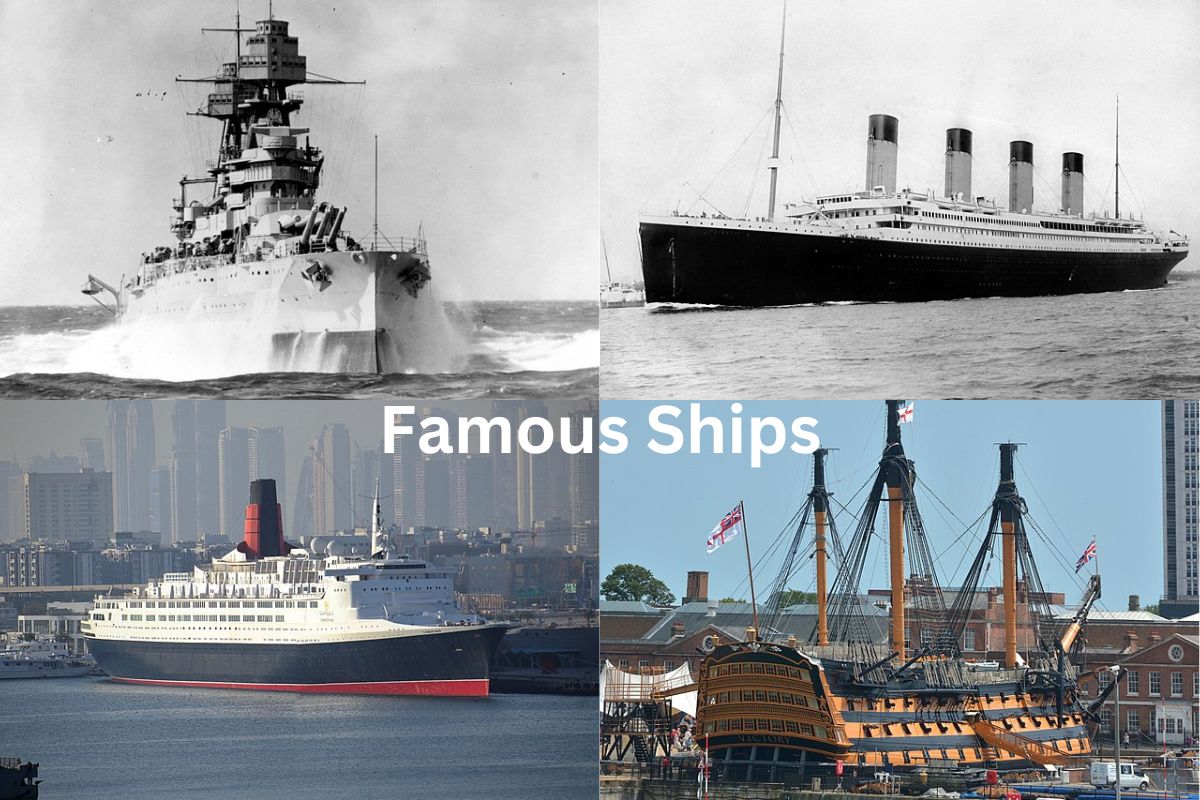Famous ships have played an important role in history, whether as vessels of exploration, war, or transportation. They have inspired tales, traditions, and even movies over the course of several centuries, capturing both our imagination and our intrigue.
Some of these vessels are famous for the technological advances they brought, while others are recognized for the horrible endings they met.
From ancient ships to modern-day cruise liners, the world has seen some of the most iconic vessels that have made significant contributions to human history.
Famous Ships
1. Titanic

The Titanic was a British passenger liner that was lost in the North Atlantic Ocean on April 15, 1912, after striking with an iceberg during her maiden journey from Southampton, England, to New York City, United States.
The Titanic was built to be one of the largest and most luxury ships of its day, complete with swimming pools, Turkish baths, and a grand staircase. Unfortunately, the ship was just four days into its journey when calamity struck.
The Titanic carried nearly 2,200 passengers and crew, including many famous personalities such as businessmen, politicians, and entertainers. The Titanic’s impact with the iceberg caused extensive damage, and it was immediately evident that the ship was sinking.
Despite efforts to preserve the ship, it eventually sank, killing approximately 1,500 people.
The Titanic’s sinking became a global catastrophe that captivated the public imagination. The tragedy prompted a slew of inquiries and investigations, including one by the US Senate, which resulted in significant improvements to marine safety standards.
The Titanic’s memory continues on in popular culture as well, with countless books, films, and television shows based on the disaster. The Titanic is still one of history’s most famous ocean liners, a tribute to the fragility of human life and the hazards of the open ocean.
2. HMS Victory
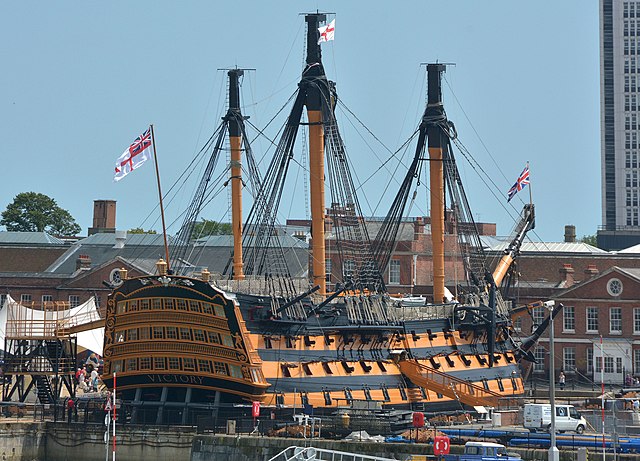
HMS Victory is a well-known British vessel that was built in 1765 and played an important role in naval history. The ship is best known for its participation in the Battle of Trafalgar in 1805, as the flagship of Admiral Horatio Nelson, a legendary British naval leader.
The HMS Victory was a 104-gun first-rate line ship that measured 69.3 meters in length and weighed 3,500 tons. It had about 800 troops on board and was strongly armed with cannons.
During the late 18th and early 19th centuries, the ship was crucial in several naval conflicts, including the American War of Independence and the French Revolutionary Wars.
The HMS Victory played a critical part in the British victory over the combined French and Spanish fleets at the Battle of Trafalgar. Nelson famously led the British fleet from the deck of the HMS Victory, inspiring his men with his bravery and leadership.
Nevertheless, Nelson was slain during the combat, and the ship was severely damaged, with over 100 crew members dead or injured.
The HMS Victory was restored and returned to duty after the engagement, although it was eventually retired in 1812.
The ship is presently maintained as a museum in Portsmouth, UK, and is one of the world’s most famous and well-known historic ships. It is a memorial to the United Kingdom’s naval legacy and a symbol of the country’s long and strong nautical past.
3. USS Constitution
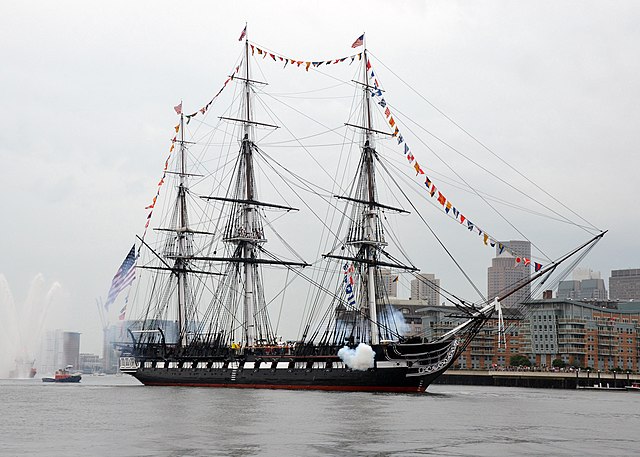
The USS Constitution is a famous wooden-hulled frigate of the United States Navy. It was launched in 1797 and is one of the six original frigates authorized for construction by the Naval Act of 1794.
The ship was named by President George Washington and is often referred to as “Old Ironsides” because of its ability to withstand cannon fire during the War of 1812.
The USS Constitution is 62 meters long, weighs over 1,500 tons, and has a crew of over 450 sailors. It was heavily armed with 44 cannon and saw significant action during its service, including capturing numerous enemy vessels and engaging in naval battles during the Quasi-War with France and the Barbary Wars.
The most famous moment in the history of the USS Constitution came during the War of 1812 when it engaged and defeated the British warship HMS Guerriere.
During the battle, the British cannonballs bounced off the Constitution’s hull, leading a crew member to famously exclaim, “Huzzah! Her sides are made of iron!” This victory boosted morale and established the reputation of the USS Constitution as a fearsome opponent.
Today, the USS Constitution is the world’s oldest commissioned naval vessel still afloat and is maintained by the United States Navy as a museum ship.
It is docked in Boston, Massachusetts, and serves as a reminder of the United States’ naval heritage and the country’s early military prowess. The ship is a popular tourist attraction and remains a symbol of American strength and resilience.
4. Mayflower
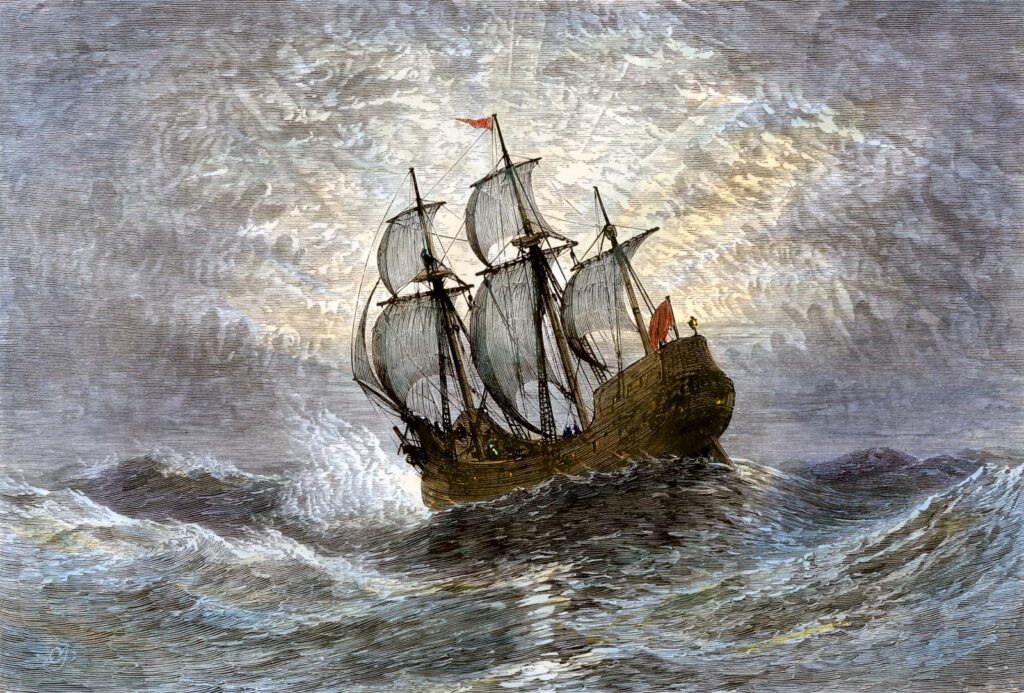
The Mayflower was the ship that transported the first English Puritans, now known as the Pilgrims, from Plymouth, England to the continent of North America in 1620.
The Mayflower voyage and the people who boarded it had an important role in the early colonization and settling of the Americas. When the Pilgrims set out for the New World, they were searching for religious freedom and a better way of life.
The ship set out with the goal of docking in northern Virginia; instead, bad weather and navigational errors prompted it to arrive in what is now the state of Massachusetts, in the region that is now home to the city of Plymouth.
The Pilgrims established the first successful and long-lasting English settlement in New England, the Plymouth Colony. Plymouth was located in the southeastern region of Massachusetts.
The journey of the Mayflower and the Pilgrims’ settlement of the New World is an important part in the history of the United States, and it is honored annually on Thanksgiving.
5. Santa Maria
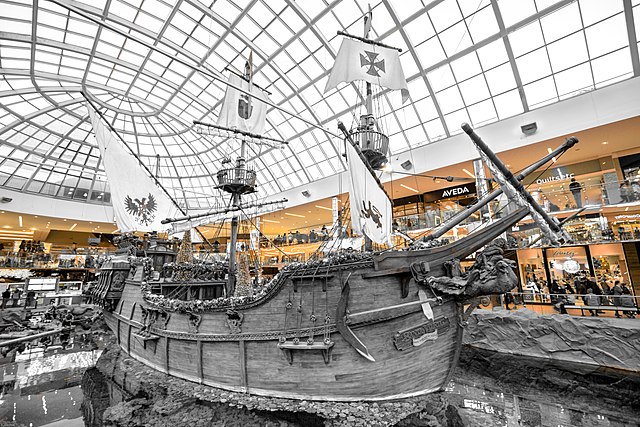
The Santa Maria was one of three ships that joined Christopher Columbus on his first voyage to the Americas in 1492. The Nia and the Pinta were the other two ships.
The Santa Maria was a carrack, a sort of ship frequently used for trading in the Mediterranean, but it was adapted for Columbus’ transatlantic journey.
The Santa Maria was the largest of the three ships, measuring about 23 meters in length and weighing about 100 tons. It had a crew of 40 men on board and was strongly armed with cannons to protect against potential attacks.
During Columbus’ voyage, the Santa Maria functioned as the expedition’s flagship, with Columbus commanding the ship. Nevertheless, on Christmas Day 1492, the Santa Maria got aground and was lost in what is now Haiti.
The expedition was completed by the Nia and the Pinta, and Columbus’ discoveries would have a tremendous impact on world history.
There are now no known surviving relics from the Santa Maria, although replicas have been built, notably one at the Columbus Museum in Spain. The Santa Maria is recognized as a symbol of the Age of Exploration, when sailors and adventurers set sail into unknown waters in quest of new lands and opportunities.
6. HMS Beagle
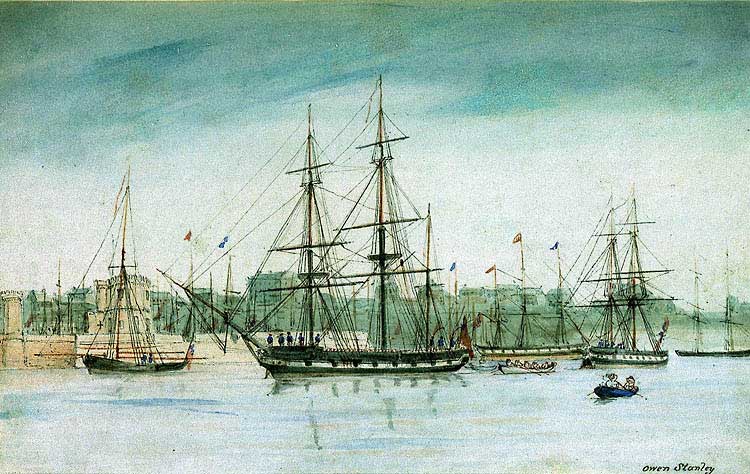
The HMS Beagle was a British Royal Navy ship most known for its role in Charles Darwin’s voyage to the Galapagos Islands from 1831 to 1836. The Beagle was a 90-foot-long and 24-foot-wide two-masted brig.
Darwin was a young naturalist at the time, and his voyage on the Beagle allowed him to collect a tremendous amount of data and specimens that led to the formation of his theory of evolution. Throughout its journey, the Beagle also conducted shoreline surveys throughout South America, including Brazil, Argentina, and Chile.
Also Read: Clipper Ships
The Beagle’s trip was not without incident, with the ship becoming aground on several occasions and suffering hazardous weather conditions. Notwithstanding these challenges, Darwin’s voyage was a success, and his observations and discoveries revolutionized scientific understanding of the natural world.
After her return to England, the Beagle was used for a variety of purposes, including as a coastguard vessel and a customs ship. It was eventually sold and demolished in 1870.
The HMS Beagle is known today for its role in one of history’s most important scientific expeditions.
A replica of the ship has been built in the English town of Woolwich, and additional monuments and museums dedicated to Darwin and his work can be found all over the world, most notably the Darwin Centre at the Natural History Museum in London.
7. HMS Bounty
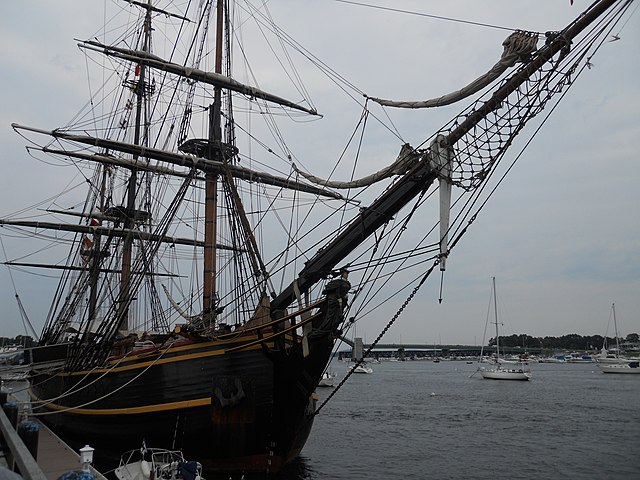
The HMS Bounty was a British Royal Navy ship most remembered for the 1789 mutiny on board. The Bounty was constructed in 1784 to transport breadfruit from Tahiti to the West Indies as part of a British effort to produce a new food crop for enslaved workers.
Conflicts between the crew and the ship’s commander, William Bligh, exploded during the voyage to Tahiti, and in April 1789, a group of mutineers led by Fletcher Christian seized control of the ship, leaving Bligh and many of his staunch followers alone in a tiny boat.
After the mutiny, the Bounty continued to sail, with Christian and the mutineers eventually settling on Pitcairn Island in the South Pacific. To avoid detection, the ship was burned and sunk.
For many years, the fate of the mutineers and their successors on Pitcairn Island was unclear, but academics were able to piece together the story of the mutiny and its aftermath in the twentieth century.
The narrative of the HMS Bounty and the mutiny that occurred on board has subsequently inspired countless books, films, and other works of popular culture, and the ship remains an iconic emblem of the dangers and perils of exploration and adventure.
8. USS Enterprise
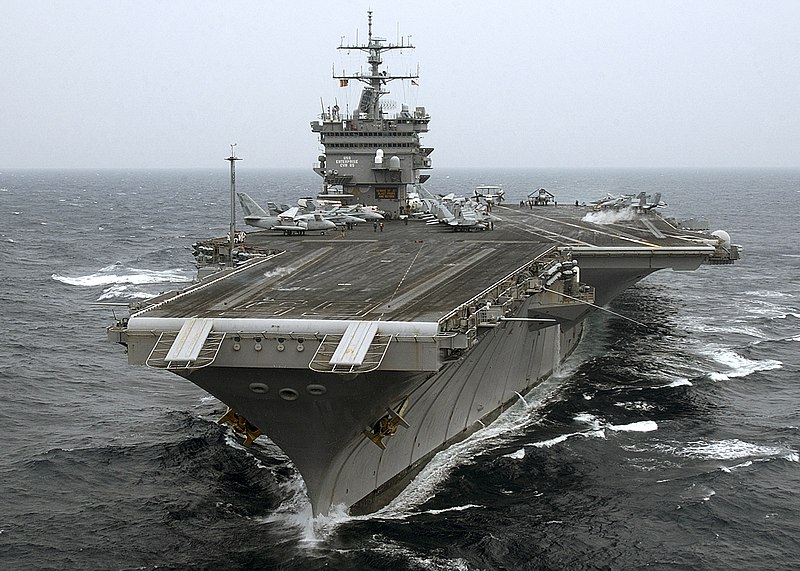
The USS Enterprise is a well-known United States Navy aircraft carrier that is largely regarded as one of the most important warships in American naval history. The ship was launched in 1960 and played an important role in a number of battles, including the Vietnam War, the Gulf War, and the Afghan War.
The USS Enterprise is a nuclear-powered aircraft carrier that was the world’s first of its kind. It is over 342 meters long, weighs over 90,000 tons, and can accommodate over 5,000 sailors and aviators.
The ship was outfitted with powerful weapons and communication equipment, as well as the ability to launch and retrieve a variety of aircraft.
The USS Enterprise took part in a number of important operations and missions throughout its career, including the Cuban Missile Crisis, the evacuation of Saigon during the Vietnam War, and air operations during the Gulf War. In addition, the ship was sent to the Persian Gulf to support Operation Enduring Freedom and Operation Iraqi Freedom.
In 2012, the USS Enterprise was decommissioned after 51 years of service. The ship received multiple decorations and commendations throughout its service, including the Presidential Unit Citation and the Navy Unit Commendation.
The USS Enterprise’s legacy remains on today as a symbol of American military strength and technological ingenuity, and its impact on naval history is widely acknowledged.
9. USS Arizona
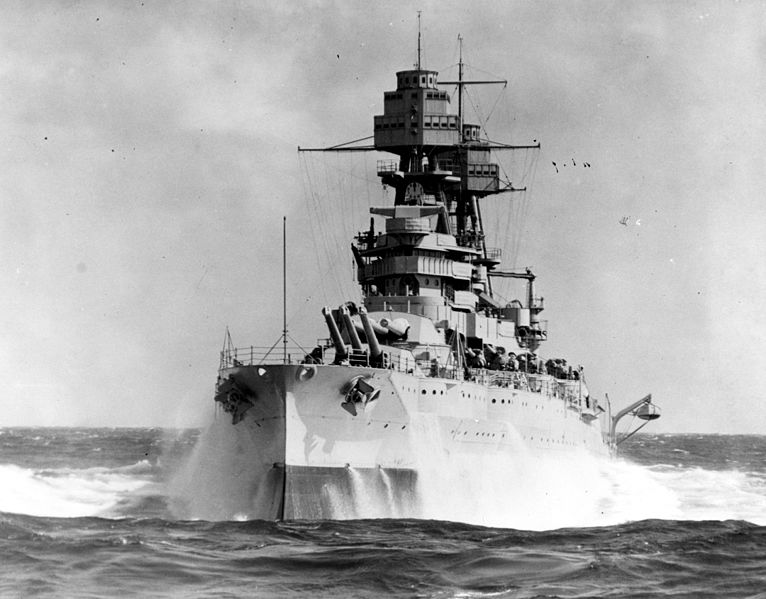
The USS Arizona was a famous battleship of the United States Navy that was sunk following the Japanese attack on Pearl Harbor on December 7, 1941, which marked the country’s entry into World War II. The ship was commissioned in 1916 and was stationed in Pearl Harbor in Hawaii as part of the United States Pacific Fleet.
The USS Arizona was a Pennsylvania-class battleship that measured more than 185 meters in length and weighed more than 34,000 tons. It was fully armed with powerful weapons and regarded as one of the most powerful battleships in the world when it was commissioned.
The USS Arizona was hit by several bombs during the attack on Pearl Harbor, causing the ship to explode and sink quickly, killing 1,177 sailors and Marines on board, accounting for about half of the American fatalities during the attack.
Today, the USS Arizona sits at the bottom of Pearl Harbor as a national monument and a memorial to the sailors and Marines who died on board.
The ship serves as a melancholy reminder of the sacrifices made by American service members during WWII and has come to represent the country’s determination to defend its freedom and principles.
10. HMS Prince of Wales
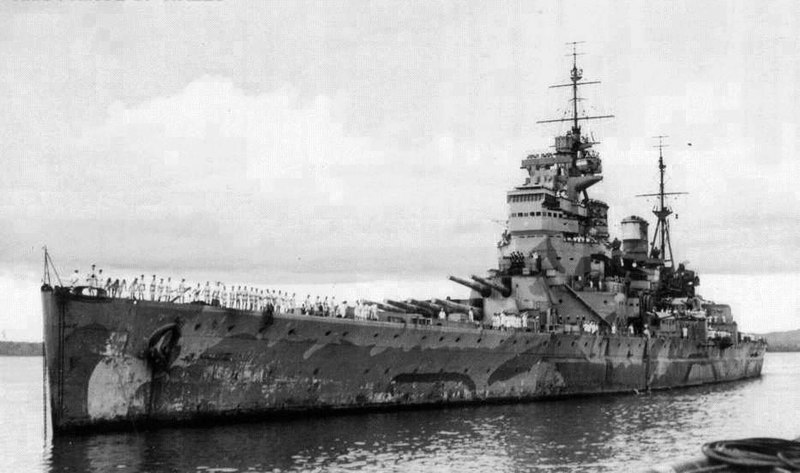
HMS Prince of Wales was a Royal Navy battleship that was commissioned in 1941 during World War II. Before being lost in battle in 1941, the ship performed an important role in the war.
The HMS Prince of Wales was a King George V-class battleship that measured more than 220 meters in length and weighed more than 42,000 tons. It had ten 14-inch cannons, sixteen 5.25-inch guns, and numerous smaller-caliber guns. The ship also had improved radar and fire control systems.
One of the most pivotal incidents in the HMS Prince of Wales’ career occurred in December 1941, when it was entrusted with stopping a Japanese invasion force in the South China Sea with the battlecruiser HMS Repulse.
Despite the ship’s superior technology, it was vulnerable to air strikes, and Japanese bombers sank both the HMS Prince of Wales and the HMS Repulse. The ships’ loss dealt a huge blow to British naval supremacy and was a watershed moment in the Pacific War.
The HMS Prince of Wales’ legacy remains on today as a symbol of British naval strength throughout WWII. The sinking of the ship also demonstrates the fragility of even the most advanced battleships in the face of modern warfare, a lesson that has shaped military policy to this day.
11. RMS Queen Mary
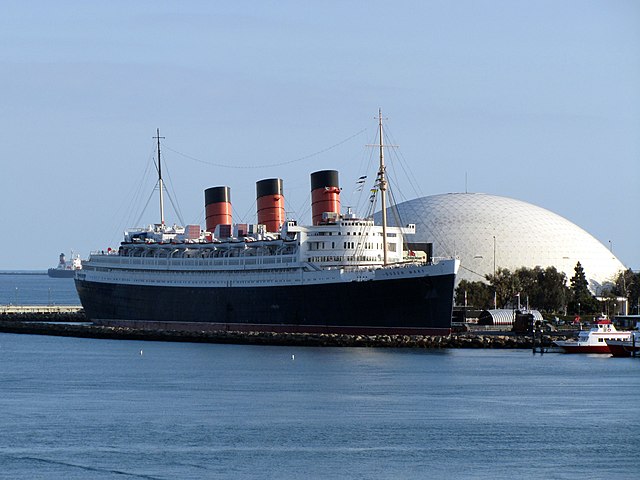
From 1936 and 1967, the RMS Queen Mary was a notable ocean liner that cruised largely on the North Atlantic. The ship was one of the most opulent and technologically advanced liners of its day, and it immediately became a symbol of British maritime history.
The RMS Queen Mary was one of the largest passenger liners of its day, measuring over 310 meters long and weighing over 80,000 tons when it was launched in 1934. The ship could carry over 2,000 passengers and included several amenities such as swimming pools, a theater, and a big ballroom.
During World War II, the British government commandeered the RMS Queen Mary and used it to transport troops and supplies across the Atlantic. To prevent discovery by German U-boats, the ship was dubbed the “Grey Ghost” and painted gray.
The ship was instrumental in the war effort, delivering over 800,000 troops and earned the moniker “The Mightiest Ship in the World.”
Following the war, the RMS Queen Mary resumed commercial service and remained a popular choice for transatlantic passengers. However, as commercial air travel became more prominent, the ship’s popularity waned, and it was eventually decommissioned from operation in 1967.
The RMS Queen Mary is now a museum and hotel in Long Beach, California, and serves as a symbol of the golden age of ocean liners and British maritime history.
12. Queen Elizabeth 2

The Queen Elizabeth 2, or QE2, was a prominent ocean liner that served from 1969 to 2008. The liner was one of the most opulent and famous of its day, and it played an important role in British maritime history.
The QE2 was one of the largest passenger liners of its day, measuring over 293 meters long and weighing over 70,000 tons when it was launched in 1967. The ship could carry over 2,500 passengers and featured several amenities such as swimming pools, a casino, and a theater.
The QE2 was employed for both commercial and military purposes during its service. During the 1982 Falkland War, the ship acted as a troop transport as well as a luxurious yacht for Queen Elizabeth II and the Royal Family on multiple occasions.
The QE2 was retired in 2008 after 40 years of service and sold to a Dubai-based business for use as a hotel and entertainment facility. Unfortunately, preparations for the ship’s refurbishment and restoration have been postponed, and it is unknown what the QE2’s future holds.
The QE2 is still an icon of British nautical history and the golden age of ocean liners today. The ship’s legacy lives on in the recollections of those who sailed on her, and it continues to astound and fascinate people who value its history and majesty.
13. USS Missouri
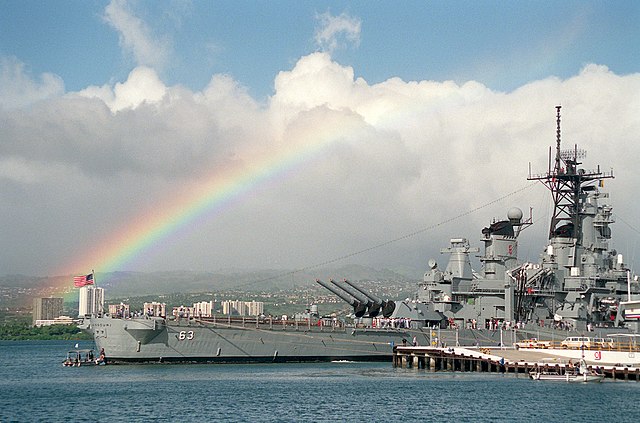
The USS Missouri is a well-known United States Navy battleship that served in World War II and later conflicts. The ship was the last battleship built by the United States and was commissioned in 1944.
The USS Missouri was an Iowa-class battleship that measured more than 270 meters in length and weighed more than 45,000 tons. It was fully armed with powerful guns and outfitted with cutting-edge radar and fire control systems.
The ship was one of the most modern and powerful battleships of its day, and it was crucial in various battles throughout WWII, notably the Battle of Okinawa.
The most famous occasion in the USS Missouri’s history occurred in 1945, when it hosted the signing of the Japanese Instrument of Surrender, signaling the end of World War II. The event was held on the ship’s deck in Tokyo Bay and was attended by senior officers from both the Allied and Japanese armies.
The USS Missouri continued to service in numerous capacities after the war, including the Korean War and the Gulf War. The ship was decommissioned in 1992 and is now housed in a museum in Pearl Harbor, Hawaii.
It is a popular tourist destination that serves as a reminder of America’s naval past and dedication to defending freedom and democracy around the world.
